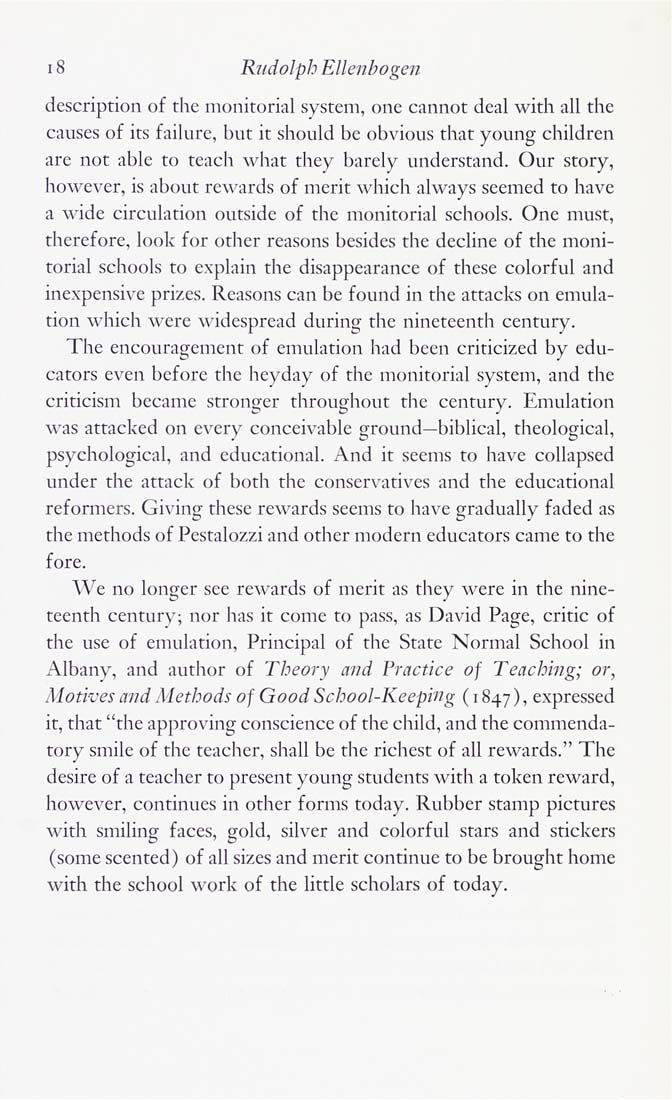Columbia Library columns (v.34(1984Nov-1985May))
(New York : Friends of the Columbia Libraries. )
|
||
|
|
|
|
| v.34,no.3(1985:May): Page 18 |

18 Rudolph Ellenbogen description of the monitorial system, one cannot deal with all the causes of its failure, but it should be obvious that young children are not able to teach what they barely understand. Our story, however, is about rewards of merit which always seemed to have a wide circulation outside of the monitorial schools. One must, therefore, look for other reasons besides the decline of the moni¬ torial schools to explain the disappearance of these colorful and inexpensive prizes. Reasons can be found in the attacks on emula¬ tion which were widespread during the nineteenth century. The encouragement of emulation had been criticized by edu¬ cators even before the heyday of the monitorial system, and the criticism became stronger throughout the century. Emulation was attacked on every conceivable ground—biblical, theological, psychological, and educational. And it seems to have collapsed under the attack of both the conservatives and the educational reformers. Giving these rewards seems to have graduaUy faded as the methods of Pcstalozzi and other modern educators came to the fore. AVe no longer see rewards of merit as they were in the nine¬ teenth century; nor has it come to pass, as David Page, critic of the use of emidation. Principal of the State Normal School in Albany, and author of Theory and Practice of Teaching; or. Motives and .Methods of Good School-Keeping (1847), expressed it, that "the approving conscience of the child, and the commenda¬ tory smile of the teacher, shall be the richest of all rewards." The desire of a teacher to present young students with a token reward, however, continues in other forms today. Rubber stamp pictures with .smiling faces, gold, silver and colorful stars and stickers (some scented) of all sizes and merit continue to be brought home with the school work of the little scholars of today. |
| v.34,no.3(1985:May): Page 18 |







